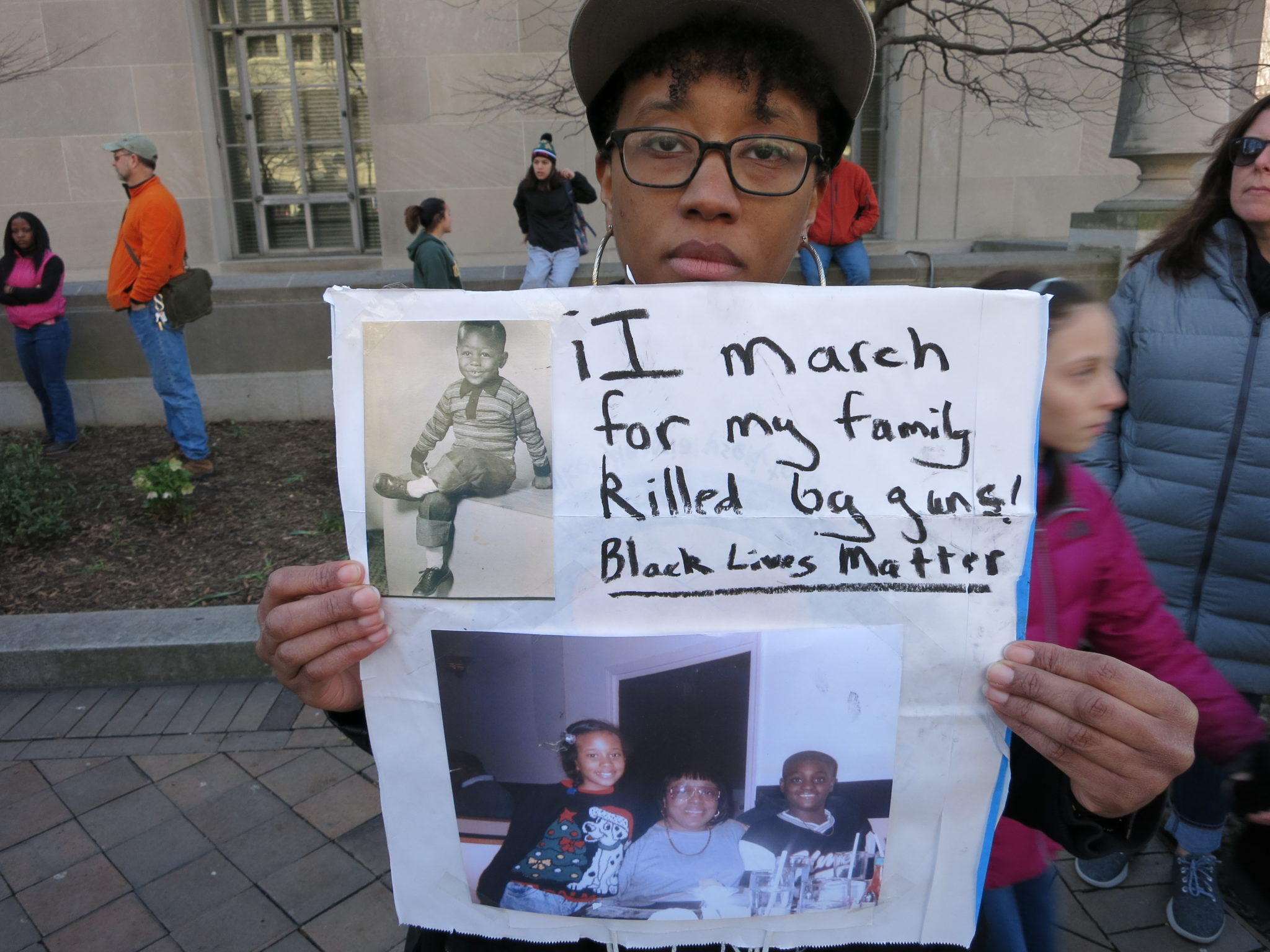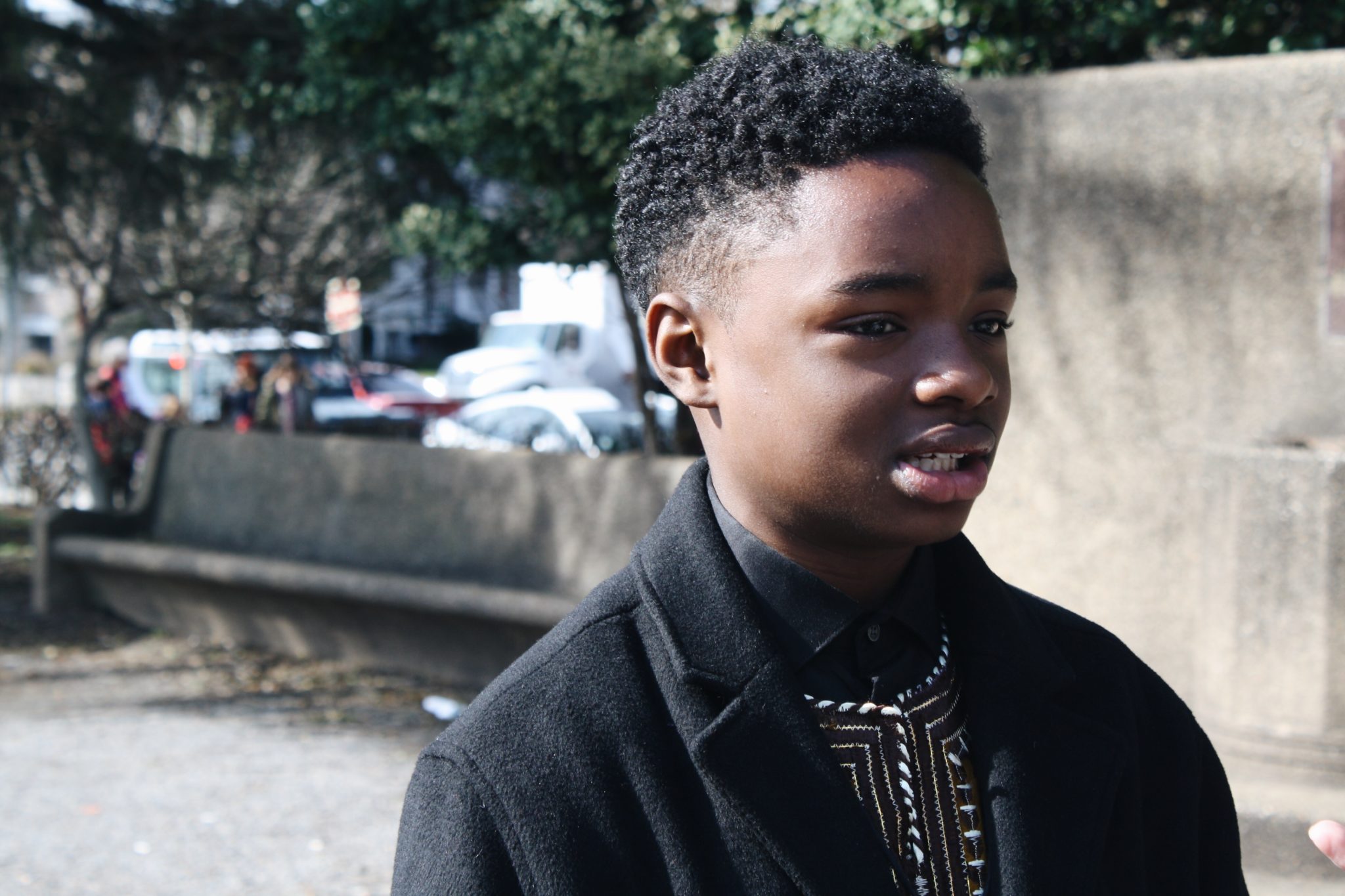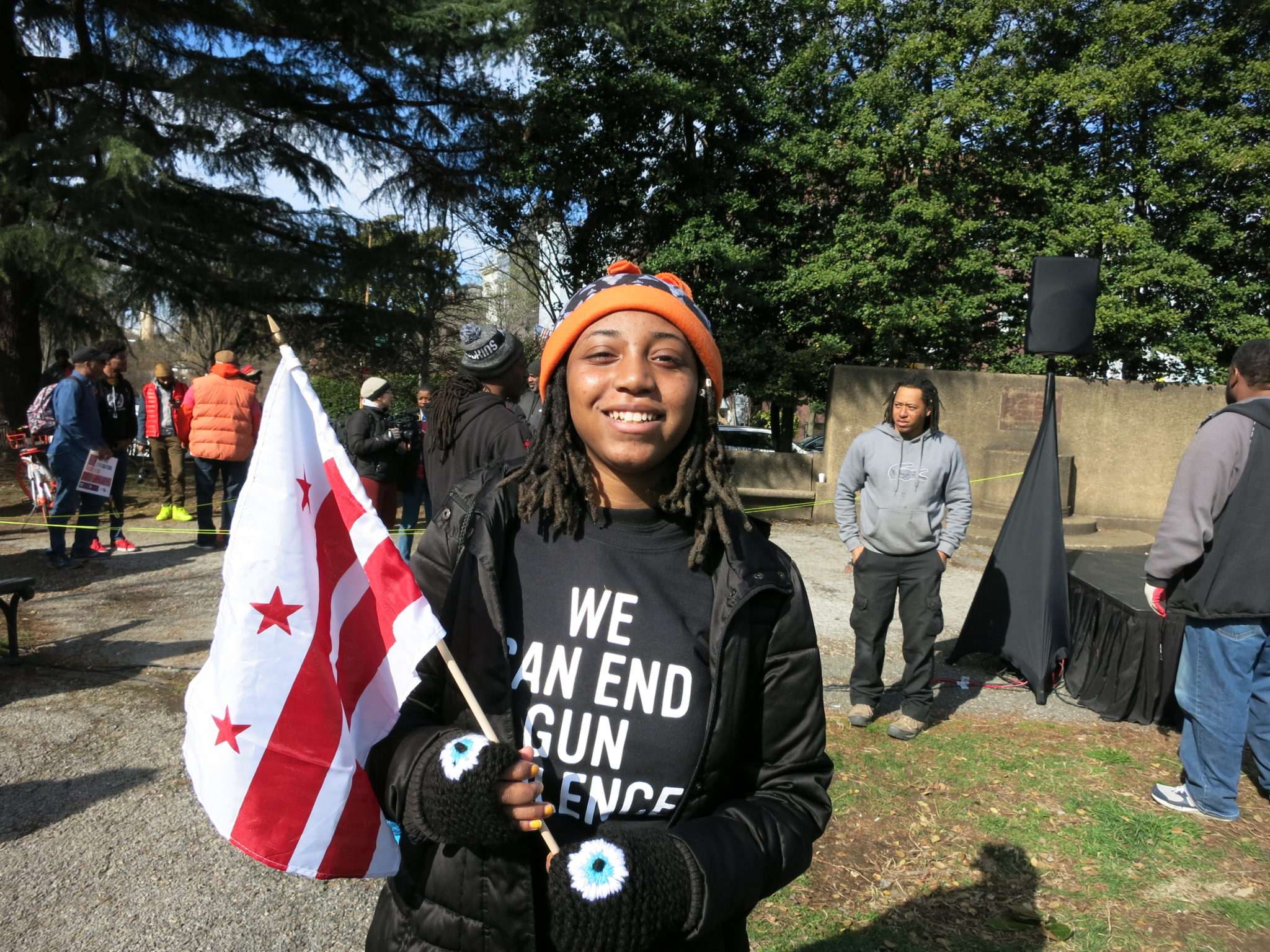Faran Grant, 30, stands alone among a crowd of 800,000 at the Washington, D.C. March for Our Lives. Like thousands of other marchers, she carries a handwritten, homemade sign while wearing a dejected expression. Two photos are taped next to text reading, “I march for my family killed by guns! Black Lives Matter.”
Grant explains that two of her family members were victims of gun violence. She points to the first photo, a black-and-white portrait of her Uncle Leon. Grant never met her uncle; he was shot and killed during a heated argument with a friend before she was born. The second photo features two small children with huge grins on their faces. Her expression grows colder as she recalls finding her cousin Steve lying in the street, covered in blood, when she was only 21 years old.
“It usually takes the death of certain people for others to take notice,” she says. “There are a lot of people who are dying, and there is a lot of blood being soaked in the grounds of America.”
Enlarge

On February 14, 2018, 13 teenage lives were lost after a mass shooting at Marjory Stoneman Douglas High School. The new face of the American anti-gun movement quickly became a passionate group of students who witnessed the tragedy firsthand. After countless tweets, various television interviews and one Time magazine cover, the adolescent survivors quickly transformed into micro-celebrities who have refused to be ignored by politicians and other adults.
Though they differ in race, age and location, Grant and the Parkland students share one thing in common: they’ve both witnessed the traumatic impact of gun violence. Grant says she’s thankful the Parkland students have been vocal about their anti-gun stance, but she’s quickly noticed a difference in the media narrative surrounding the white high school students and black victims of gun violence.
“The kids from Parkland are very motivated, and their teachers have trained them very well to be public defenders of everyone and give themselves a voice,” she says. “The media likes certain types of victims, and other victims are not given the same due. Victims who are white and white-appearing, who are middle class and upper class and come from certain neighborhoods, are typically the ones who are given the voice.”
Enlarge

Grant isn’t the only person who is frustrated with the media’s portrayal of white activists. Over the last few years, some feel the Black Lives Matter movement has often been demonized by the American media. Many black Americans perceive drastically varying narratives surrounding victims of gun violence, creating feelings of disappointment and disenchantment within black communities.
The evening before the march, longtime anti-gun activist Jamira Burley spoke on a panel about gun control legislation at the National Press Club. A lifelong social justice advocate, Burley is the senior advisor at the Community Justice Reform Coalition. She spoke to attendees about the importance of creating an intersection between Black Lives Matter activists and their white peers.
“We finally have victims who have, because of their privilege, received a national platform because they’re white,” she says. “We need to see all human death as a problem, regardless if this person is a drug dealer or student.”
Like many other activists, Burley praised the Parkland students for their continued effort to include members of other, less privileged communities in their discussions of gun violence. She stressed the importance of intersectionality in widespread social movements and noted how the youngest generation is more socially conscious than their predecessors.
Enlarge

“They’ve done what their parents haven’t done, which is be inclusive,” she says.
The Parkland students have acknowledged their own privilege, and they’ve been vocal about their desire for communication among various anti-gun violence movements. Seventeen-year-old Eryn Banton is a high school activist who wishes all victims of gun violence could be treated with the same respect.
“I’m extremely thankful that these students are using their platform to make a difference, but I wish that people would see the flaws in the process,” she says. “[The media] is talking about schools and just paying attention to those students, but they called Black Lives Matter activists terrorists. We’re all fighting for the same thing. We just want to stay alive.”
The morning of the March for Our Lives, hundreds of Black Lives Matter activists gathered in D.C.’s Folger Park. Young black activists gave compelling speeches and performed powerful spoken word pieces about gun violence within their own communities. Onlookers of every race cheered and showered the adolescents with praise and support. National Collegiate Preparatory High School teacher Gianni Clarkson, 38, discussed the unexpected death of one of his students. A young father on his way to college, Zoruan Otto Harris was another young, black victim of gun violence.
“In certain communities, [gun violence] is expected and nobody feels bad about it, but when it happens in other communities, it’s a tragedy,” says Clarkson. “I don’t want to trivialize what’s happening, but when children are shot and killed in D.C., no one walks out for them. What does that tell my students?”
Richard Wright Public Charter School student Imani Romney, 16, read a powerful poem in front of the enthusiastic crowd. Romney wondered if her “school of color” would receive as much media attention as Stoneman Douglas High School if a school shooting occurred.
“I had a friend ask me, if this same shooting happened at our school, would we get the same amount of press?” she asked. “I told her I don’t know, but that doesn’t mean we should stop fighting, and that doesn’t mean we should sit back and watch and let more of these things happen.”
